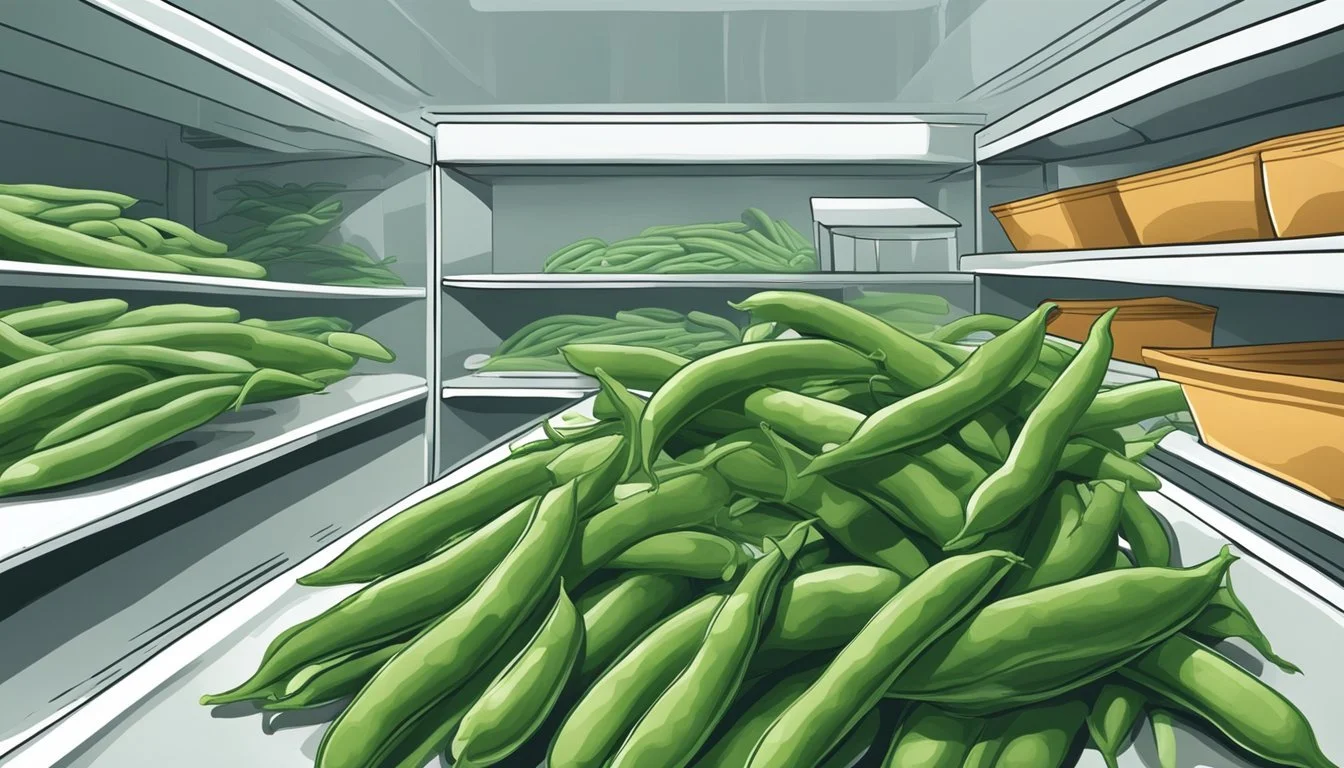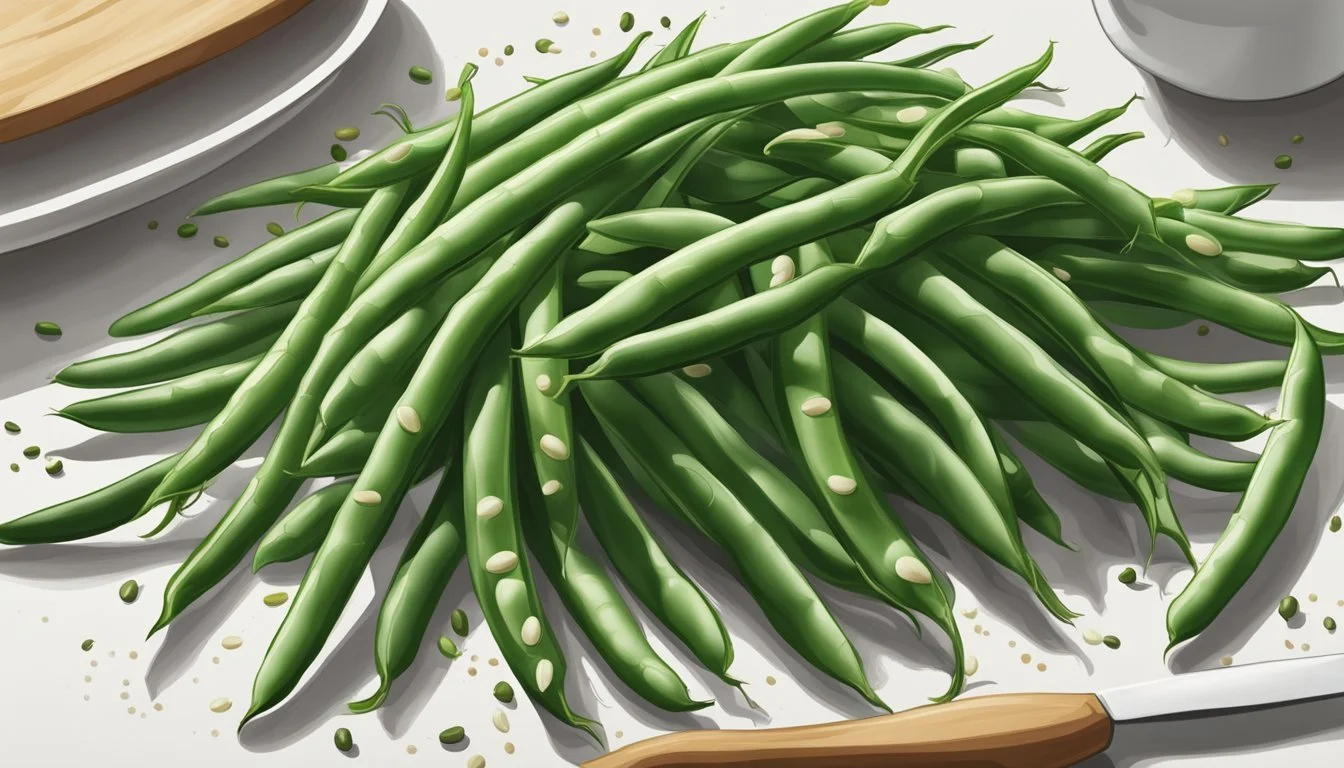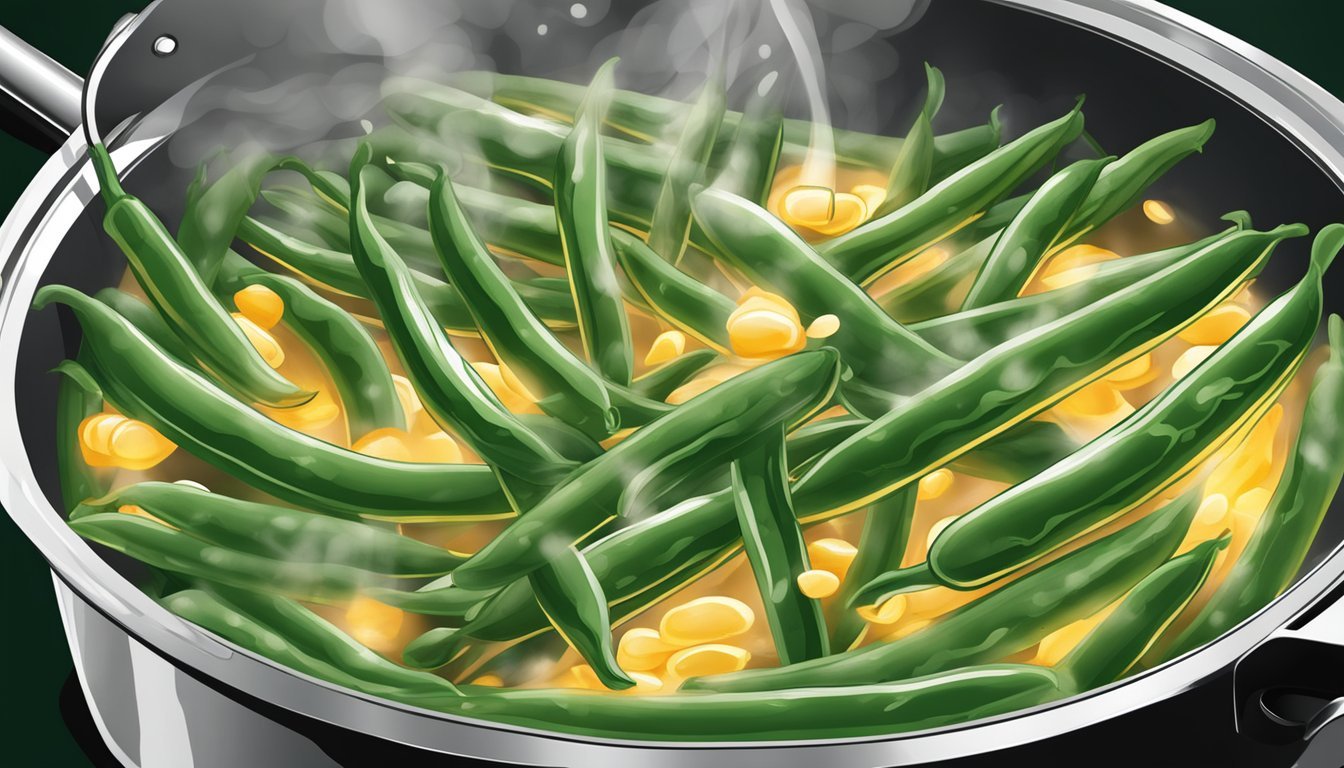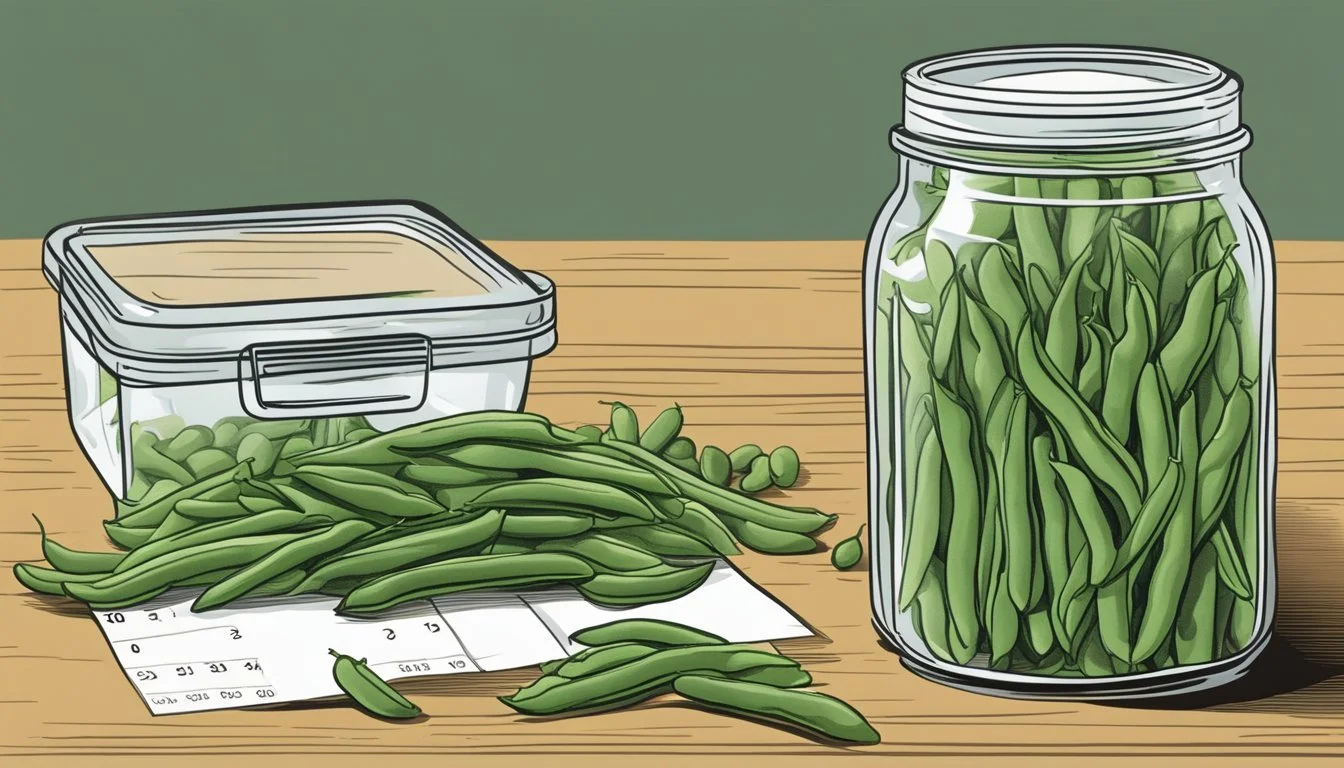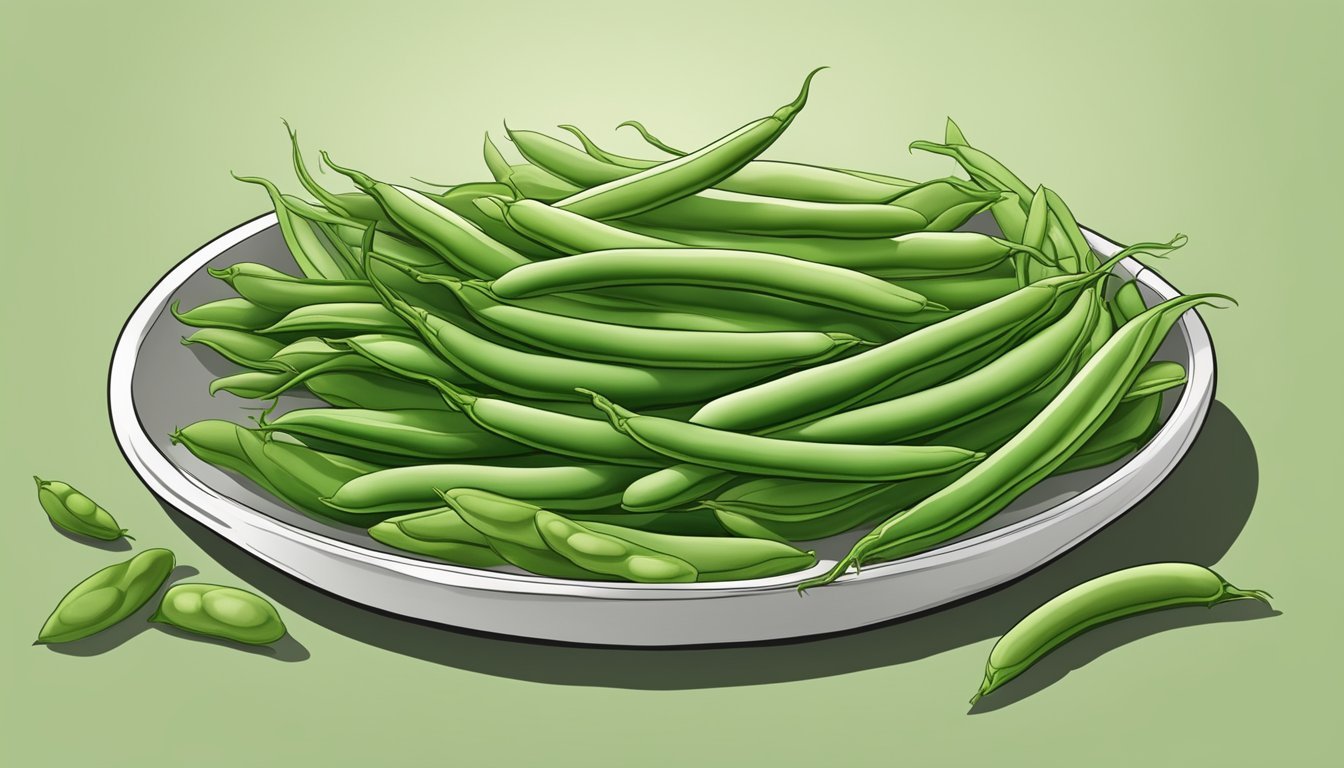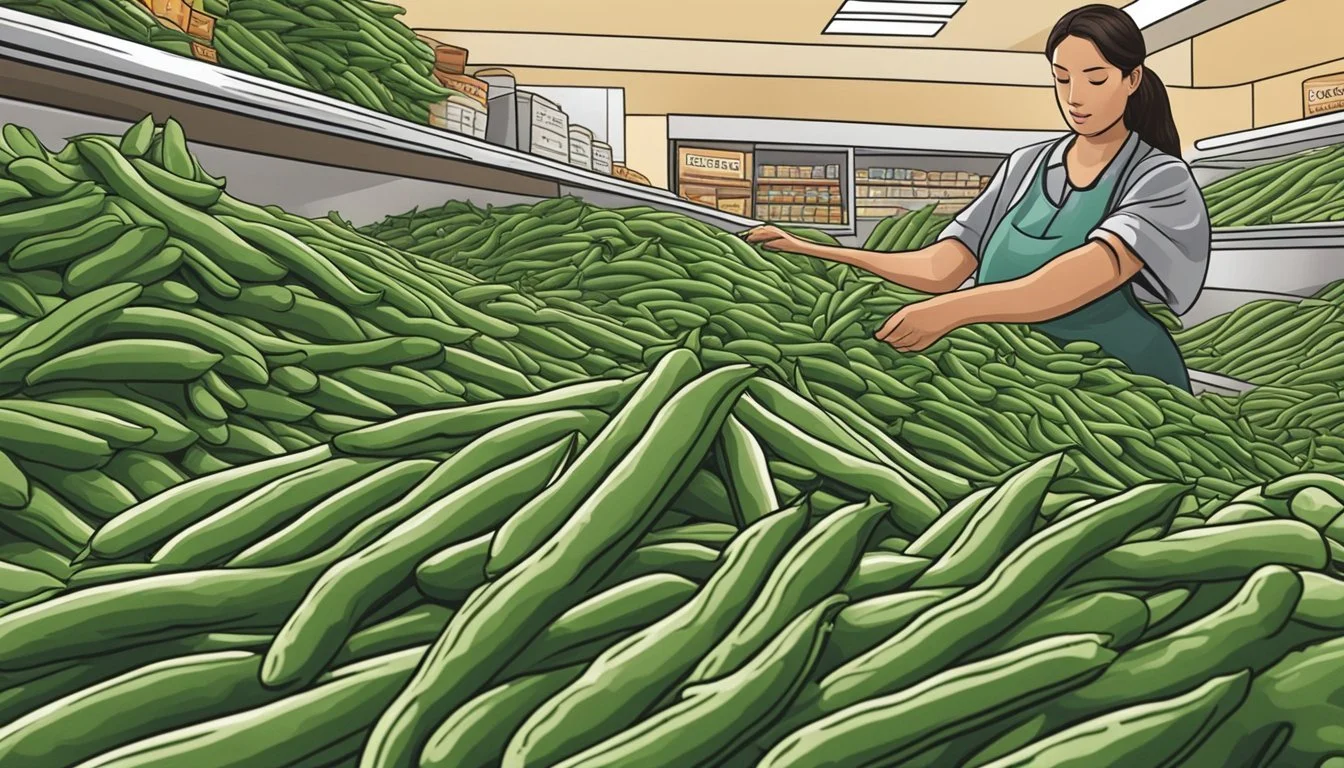How Long Do Green Beans Last?
Shelf Life and Storage Tips
Green beans are a versatile and nutritious vegetable that can be enjoyed in a variety of dishes, from salads to casseroles (What wine goes well with casseroles?). Understanding their shelf life is essential for ensuring their best quality and taste when consumed. Fresh green beans typically last 5-7 days in the refrigerator. The longevity of green beans depends on how they are stored after they are purchased. It's important to store them properly in order to maintain their freshness and nutritional value.
Various preservation methods can extend the shelf life of green beans. If they are frozen, green beans can last for 8 to 10 months when properly packaged. Blanching green beans prior to freezing by boiling them for several minutes and then cooling them in ice water before placing them in a resealable plastic freezer bag can help preserve their color, texture, and flavor. When it comes to canned or cooked green beans, they will generally last for the same amount of time as fresh green beans in the refrigerator. However, canned green beans that remain unopened can last for years on the shelf.
Knowing how to preserve green beans and recognize signs of spoilage can help individuals make the most of this vegetable. While there are over 100 types of snap beans, from pole and bush varieties to string beans, the principles of storage and signs of freshness or spoilage remain consistent across varieties. To maintain the quality of green beans, they should be stored in a cool, dry place until ready to be washed, trimmed, and used. Proper storage methods not only add to the shelf life of green beans but also help retain their nutritional benefits.
Identifying Freshness
When selecting green beans, one should assess freshness through visual inspection, touch and scent. Here are some definitive ways to determine if green beans are fresh.
Visual Cues
Fresh green beans should have a vibrant green color, indicating they are at their peak freshness. They must be free from bruises and brown spots. One should look closely to ensure the beans aren't beginning to yellow or dull in color. A vibrant color generally signifies a recent harvest and proper storage.
Texture and Firmness
The texture of green beans is a reliable indicator of their freshness. They should feel firm to the touch and should snap easily when bent, a characteristic feature of freshness. Any sign of wrinkles or a rubbery feel suggests the beans are past their prime. The skin should be smooth without any puckering.
Smell and Avoiding Spoilage
Green beans should have a neutral, earthy smell. Any off or sour odors are clear signs of spoilage. Beans that have a slimy texture or visible mold should be avoided, as these are both indications the beans are no longer suitable for consumption. By regularly smelling and inspecting green beans, one can avoid using spoiled produce in their cooking.
Storing Green Beans
Proper storage of green beans is essential for preserving their freshness and extending their shelf life. Effective green bean storage involves managing temperature, moisture, and air exposure.
In the Fridge
Green beans should be refrigerated to maintain their crispness and prevent spoilage. They last about seven days when stored correctly. The optimal temperature for storage is at or just above 32°F (0°C), which most household refrigerators are equipped to maintain.
Using the Crisper Drawer
The refrigerator's crisper drawer, designed to hold produce, is an ideal location for green beans. It helps retain moisture while providing a slightly higher humidity level than other fridge sections, which is beneficial for vegetables. Green beans should be placed loosely in the crisper without washing them beforehand, as added moisture can lead to decay.
Storing in Plastic Bags and Airtight Containers
When using plastic bags, one should ensure that the green beans are dry and that the bag isn’t sealed completely; allowing for moderate air circulation prevents condensation. Conversely, when using an airtight container, it is advisable to line it with a paper towel to absorb any excess moisture that may accelerate rotting.
Moisture Control
Controlling moisture is paramount when storing green beans in the refrigerator. Any rotting or browned beans should be removed as they can affect the freshness of the remaining beans. If the green beans seem too moist, they can be laid out on a dry paper towel-lined tray to wick away excess moisture before refrigeration. Washing green beans should be done only before they're about to be used to prevent premature spoilage.
Freezing and Blanching
Properly freezing and blanching green beans significantly extends their shelf life while maintaining their quality. This section outlines the steps necessary to prepare, blanch, and store green beans in the freezer.
Preparation for Freezing
Before freezing green beans, it's essential to trim the ends and remove any strings. Snap or cut the beans into preferred sizes to ensure uniformity and ease of use after freezing. It is recommended to wash the beans thoroughly under cool tap water to remove any dirt or debris.
Blanching Technique
Blanching is a critical step that involves boiling green beans for a short period, followed by immediately immersing them in ice water. This process stops the enzymes that lead to spoilage, ensuring that the green beans retain their vivid color, flavor, and nutritional value. Typically, green beans should be boiled for three minutes and then quickly transferred to an ice bath.
Storing in Freezer Bags
Once blanched and completely cooled, pat the green beans dry with a clean towel. Spread them in a single layer on a baking sheet to freeze them initially. This prevents clumping, making it easier to use exact portions later. After the beans are frozen, transfer them to freezer bags. Remove as much air as possible before sealing to prevent freezer burn. Labeled with the date, properly blanched and stored green beans can have a shelf life of up to one year in the freezer.
Cooking Fresh and Frozen Green Beans
Fresh and frozen green beans offer versatility across cooking methods to suit any meal, whether one seeks tender textures for stir fry or a crisp finish in baked dishes.
Methods for Fresh Green Beans
Boiling: A common approach for cooking fresh green beans is boiling. Start by washing the beans and removing the ends. Then, one can boil them in a pot of water for 3-5 minutes until they become tender yet maintain a slight crunch. This method is ideal for dishes needing softer beans, such as casseroles.
Sautéing: To sauté fresh green beans, one should first trim the ends and then heat a pan with a choice of oil or butter. The beans are cooked on medium-high heat for 5-7 minutes, resulting in a flavorful and slightly crisp texture, perfect for stir fry meals.
Techniques for Frozen Green Beans
Microwaving: To quickly prepare frozen green beans, place them in a microwave-safe container with a little water, cover, and cook for about 45 seconds until thawed. They can be dried and then sautéed to add flavor.
Baking: When baking frozen green beans, spread them on a parchment-lined baking sheet and drizzle with olive oil, salt, and pepper. Roast at 425°F for 15-20 minutes until they are crisp and golden, offering a crunchy addition to any meal.
Understanding Shelf Life
The shelf life of green beans varies significantly depending on their form - whole, cut, fresh, frozen, or canned. It's crucial for consumers to recognize the variations to prevent waste and identify when green beans may have gone bad.
Whole vs. Cut Green Beans
Whole green beans generally maintain their quality for 5 to 7 days in the refrigerator if stored properly in a plastic bag without being washed beforehand. In contrast, cut green beans may have a shorter shelf life due to their exposed surfaces, which can dry out or spoil more quickly.
Preservation Tips:
Do not wash whole green beans until ready to use.
Store in a sealed plastic bag, preferably in the vegetable drawer.
Fresh vs. Frozen vs. Canned
Fresh Green Beans: Last for 5 to 7 days in the refrigerator. They should be bright and firm to the touch; if they become dry and limp, they may be spoiled.
Storage for Fresh Green Beans:
Keep unwashed in a plastic bag.
Consume within a week for optimal freshness.
Frozen Green Beans: Can last for up to 12 months when properly stored in the freezer. It is essential to wash and trim the ends before freezing.
Freezing Instructions:
Wash thoroughly.
Remove ends.
Blanch if preferred.
Store in freezer-safe bags or containers.
Canned Green Beans: Have a shelf life of up to three years as long as the can remains unopened and undamaged. Once opened, they should be transferred to an airtight container and consumed within a few days.
Tips for Canned Green Beans:
Store in a cool, dry place.
Check the can for bulging, rust, or damage before use.
Spotting Signs of Bad Green Beans
When determining if green beans have gone bad, pay close attention to discoloration, odors, texture, and any signs of mold and rotting. These factors are crucial in assessing the freshness and edibility of green beans to prevent foodborne illness.
Discoloration and Odors
Green beans that are starting to spoil may show discoloration, such as brown spots or a dull, faded green color. They may lose their vibrant hue, indicating they are past their prime. An off-putting odor is a clear sign that bacteria have begun to affect the beans, posing a risk for foodborne illness.
Texture Changes
Fresh green beans have a firm texture and should snap crisply when bent. Beans that feel soft, mushy, or slimy to the touch have likely gone bad. This sliminess often indicates bacterial growth. A smooth feel can also suggest spoilage, as healthy green beans typically have a slight roughness to their pods.
Mold and Rotting
Visible signs of mold, including fuzzy white or green spots, are evidence that the green beans should not be consumed. Rotting can be identified by localized areas that are breaking down and deteriorating. Discard any green beans with these signs to avoid the potential risks of ingesting mold, which carries health hazards.
Incorporating Green Beans in Meals
Green beans, also known as string beans, are a versatile ingredient that can enhance the taste and nutritional value of various meals. They add a pleasing crunch when raw and become satisfyingly tender when cooked properly.
Salad and Side Dishes
In salads, green beans offer a refreshing crunch and a vibrant hue. They can be blanched to retain their crispness and then tossed with other vegetables, dressings, or even nuts for texture. As a side dish, green beans sautéed with garlic and a sprinkle of salt can complement almost any main course.
Salad Example
Blanch green beans; combine with cherry tomatoes, feta, and balsamic vinaigrette.
Main Courses and Soups
Green beans make a substantial addition to main courses, whether in stir-fries or as a component in soups. They should be added to ensure they stay crisp-tender, enhancing the overall meal experience. In soups, green beans provide body and a pop of color.
Soup Example
Simmer green beans in a tomato-based vegetable soup with herbs for a hearty meal.
Casseroles and Baked Dishes
In casseroles, green beans contribute texture alongside creamy sauces and other ingredients. When baking, it's essential to balance cooking times to avoid excessively soft beans unless the recipe specifically calls for it.
Casserole Example
Layer cooked green beans, mushroom soup, and crispy fried onions for a classic green bean casserole. Bake until bubbly.
Nutritional Benefits and Varieties
Green beans serve as a valuable source of essential nutrients and come in a multitude of varieties. They can be a versatile and healthy addition to any garden or diet.
Green Beans Nutritional Profile
Green beans are low in calories and fat but provide a substantial amount of dietary fiber and vitamins. A typical serving size, such as one cup of raw green beans, contains:
Fiber: Approximately 2.7 grams, which aids in digestion and cardiovascular health.
Vitamin C: A significant contributor to immune system health, skin repair, and antioxidant properties.
Vitamin K: Essential for blood clotting and bone health.
Vitamin A: Important for vision and the immune system.
In addition to these, green beans also supply a dose of folic acid and are an excellent plant-based source of iron, which is crucial for avoiding anemia.
Different Types of Green Beans
Varieties of green beans, numbering over 130, vary in size, shape, and flavor, offering a range of options for growers and consumers:
Wax Beans: Known for their yellow pods and similar nutritional profile to green beans.
Edible Pod Varieties: Includes the common green bean and wax beans, which do not require shelling.
Each variety of green beans can be grown from seeds in a home garden and is prized for its edible pods. The diversity among these types means more choices for incorporating these nutritional powerhouses into meals.
Preservation Techniques Beyond Freezing
While freezing is a popular method for preserving green beans, other effective techniques can ensure their quality and extend their shelf life without necessitating refrigeration.
Canning Green Beans
Canning is a method that involves placing green beans in a can or jar and heating them to a temperature that destroys microorganisms and inactivates enzymes. This process requires precise temperature control and an acid adjustment for safety, especially with low-acid foods like green beans.
Temperature: Typically, green beans are processed at 240°F (116°C) for a prescribed period, depending on the canning method and jar size.
Shelf life: Properly canned green beans can last for up to a year or even longer when stored in a cool, dark place.
Drying and Dehydrating
Drying or dehydrating green beans removes moisture, which inhibits the growth of bacteria, yeasts, and molds. Beans can be dried using a food dehydrator, an oven, or even air-dried if the climate is suitable.
Temperature: Ideal drying temperatures range from 125°F to 135°F (52°C to 57°C).
Shelf life: When properly dried and stored in airtight containers in a cool, dark place, green beans can last for several months.
Preservation techniques such as canning and drying allow for long-term storage of green beans without the need for refrigeration, making them accessible and convenient all year round.
Shopping for Green Beans
When shopping for green beans at the grocery store, one's ability to pick fresh produce and store it properly will determine the longevity and taste of the beans.
Selecting the Best Green Beans at the Store
When they are searching for green beans, shoppers should look for vibrant, bright green pods that are firm to the touch. The best green beans will have a smooth texture with no visible bruises or brown spots. They should also snap easily when bent, indicating freshness. One should avoid any beans that appear wilted, dry, or leprous, as these signs may indicate that the beans are past their prime.
Color: Bright green
Texture: Firm, smooth
Freshness: Snaps when bent
Appearance: No bruises or brown spots
Storing Immediately After Purchase
After purchasing green beans, one should store them promptly to maintain their freshness. It is best to place green beans unwashed in a plastic bag and then in the refrigerator's vegetable drawer. This helps to retain their moisture and texture until one is ready to use them.
Do not wash: Store them unwashed to prevent mold.
Packaging: Use a plastic bag for storage.
Refrigeration: Store in the vegetable drawer of the refrigerator.
FAQs on Green Beans
Green beans are a versatile and nutritious vegetable when handled properly. This section provides essential tips for prepping green beans and answers common questions about their cooking and storage.
How to Trim and Prep Green Beans
To prepare green beans, one should wash them under running water to remove any dirt or debris. After washing, trim the ends by cutting or snapping them off. If needed, beans can be cut into desired lengths. Green beans can be left whole for certain recipes that call for it.
Common Questions About Cooking and Storage
What is the best way to store raw green beans?
Store them in a plastic bag in the vegetable drawer of the refrigerator. Ensure they are dry to prevent mold growth.
How long can raw green beans stay fresh in the fridge?
Typically, they can last for 5-7 days if stored properly.
Can you freeze green beans?
Yes, by blanching in boiling water first, then storing them in a resealable freezer bag, they can last for 8-10 months.
How can you tell if green beans are no longer good?
They become dry and limp, and may have brown spots or an off smell.
How should you store cooked green beans?
Keep them in an airtight container, and they can last up to 5 days in the fridge.
Is it safe to reheat green beans?
Yes, reheat only once to maintain quality and reduce food safety risks. Use an oven, microwave, or stovetop until they are heated through.

